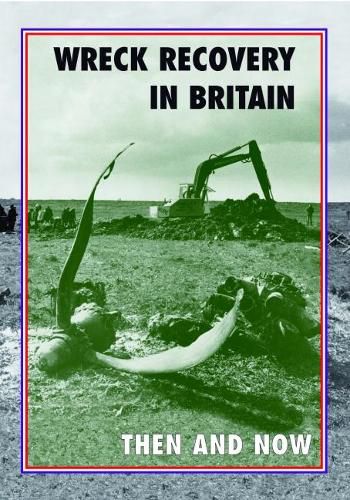Readings Newsletter
Become a Readings Member to make your shopping experience even easier.
Sign in or sign up for free!
You’re not far away from qualifying for FREE standard shipping within Australia
You’ve qualified for FREE standard shipping within Australia
The cart is loading…






WRECK RECOVERY IN BRITAIN THEN AND NOW By Peter J. Moran The last 50 years have seen an incredible interest in the excavation of crashed aircraft. Schoolboys of the war period eagerly sought and swapped souvenirs, purloined from crashes under the eyes of the police or RAF guards but, after the surface wreckage was cleared away by Maintenance Units, no one realised that even greater treasures remained underground. Whereas on the Continent the Missing Research and Enquiry Unit left no stone unturned to try to trace the thousands of airmen who still remained missing, strangely enough no similar operation was carried out by the RAF on crash sites in the United Kingdom. Many of these still contained the mortal remains of pilots whose names had been added to the Memorial to the Missing unveiled at Runnymede in 1953. Perhaps, because the war in the air that followed the Battle of Britain had shifted its focus to Europe, it appeared to fade from people’s memory that a hard-fought battle had taken place over the United Kingdom in 1940. It is difficult to understand today how it took so long for the realisation to sink in that aircraft wreckage still remained buried. When it did, there followed what can only be described as an unholy scramble to find crash sites and dig them up, heavy plant being employed to make it easier and quicker. At the height of this unfettered exploration period during the 1970s, there were over 30 ‘aviation archaeology’ groups, or loose affiliations of like-minded individuals at work, particularly in the counties of Essex, Kent and Sussex over which the main battle had been fought. Unrecovered human remains were now being found which understandably raised criticism from some quarters but was defended by the argument that missing airmen should have been recovered by the authorities in former years. Inevitably order had to be restored and the Ministry of Defence stepped in with a ‘code of conduct’ for digging up crashed aircraft, a measure that was reinforced by an Act of Parliament in 1986. Thereafter a process was introduced whereby the Ministry issued licences before a wreck site could be excavated, and every licence application, whether granted or refused, is listed for the first time in this book. In the end, after all the accessible locations had been exhausted, the exploration of wartime crash sites in Britain largely came to a close. 600 illustrations
$9.00 standard shipping within Australia
FREE standard shipping within Australia for orders over $100.00
Express & International shipping calculated at checkout
WRECK RECOVERY IN BRITAIN THEN AND NOW By Peter J. Moran The last 50 years have seen an incredible interest in the excavation of crashed aircraft. Schoolboys of the war period eagerly sought and swapped souvenirs, purloined from crashes under the eyes of the police or RAF guards but, after the surface wreckage was cleared away by Maintenance Units, no one realised that even greater treasures remained underground. Whereas on the Continent the Missing Research and Enquiry Unit left no stone unturned to try to trace the thousands of airmen who still remained missing, strangely enough no similar operation was carried out by the RAF on crash sites in the United Kingdom. Many of these still contained the mortal remains of pilots whose names had been added to the Memorial to the Missing unveiled at Runnymede in 1953. Perhaps, because the war in the air that followed the Battle of Britain had shifted its focus to Europe, it appeared to fade from people’s memory that a hard-fought battle had taken place over the United Kingdom in 1940. It is difficult to understand today how it took so long for the realisation to sink in that aircraft wreckage still remained buried. When it did, there followed what can only be described as an unholy scramble to find crash sites and dig them up, heavy plant being employed to make it easier and quicker. At the height of this unfettered exploration period during the 1970s, there were over 30 ‘aviation archaeology’ groups, or loose affiliations of like-minded individuals at work, particularly in the counties of Essex, Kent and Sussex over which the main battle had been fought. Unrecovered human remains were now being found which understandably raised criticism from some quarters but was defended by the argument that missing airmen should have been recovered by the authorities in former years. Inevitably order had to be restored and the Ministry of Defence stepped in with a ‘code of conduct’ for digging up crashed aircraft, a measure that was reinforced by an Act of Parliament in 1986. Thereafter a process was introduced whereby the Ministry issued licences before a wreck site could be excavated, and every licence application, whether granted or refused, is listed for the first time in this book. In the end, after all the accessible locations had been exhausted, the exploration of wartime crash sites in Britain largely came to a close. 600 illustrations